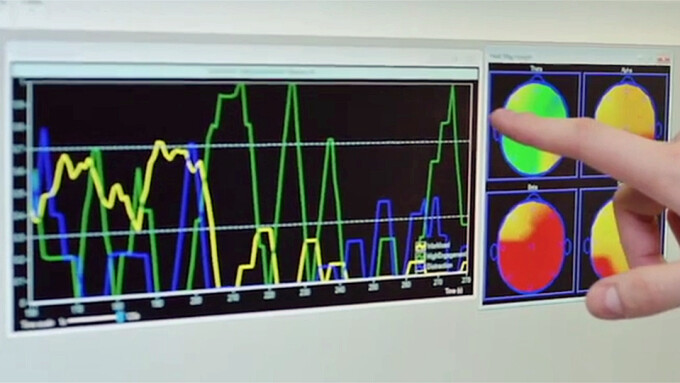LOS ANGELES — BaDoinkVR, in conjunction with Neurons Inc., has undertaken a study examining the impact of virtual reality porn on viewer’s brains, both biologically and psychologically.
According to a report by VRPornCat, BaDoinkVR is building foundations for the next generation of virtual reality porn, pushing the limits of immersion across physical and emotional sensations, based on a deeper understanding of these cognitive responses elicited from a group of participants watching the same adult video in two different formats — on a 2D flat screen, as well as in 3D virtual reality.
“During this exercise, brain wave activity was measured using an EEG (electroencephalograph) system to measure brain responses, which included cognitive load (level of mental processing), motivation (level of interest), and arousal (level of excitement),” the report states. “By comparing the measurements from the 3D to 2D experience, the neuroscientists at Neurons Inc. were able to identify key findings that gave insight into how people engage with virtual reality environments.”
Among the study’s findings, researchers noted that the 3D environment increased arousal and excitement, which was intensified through interactivity, with viewer’s boosting their mental processing in 3D compared to 2D viewing.
“Participants have a peak in arousal at the beginning of the video right before the performer takes off her clothes. There is a rise in excitement in anticipation of the performer disrobing,” the report reveals. “One of the highest peaks in arousal and excitement is the first moment when the performer has penetration. In the context of the entire video, this is one of the most intense moments.”
Other highlights reveal that making eye contact with performers results in a rise in arousal and motivation, while witnessing performers enjoy themselves generates a high level of engagement, especially during orgasm — although choking sounds during oral sex were found to yield a negative response from participants who found it unappealing.
Experience also plays a role, with new VR participants displaying higher brain activity (cognitive load) than those who had previously experienced VR, illustrating one example where individuals can respond differently to the same scene.
“When the performers body is close to the camera it elicits a strong emotional response; some positive, some negative,” the report reveals. “Experienced users tend to like it while novice users find it more threatening.”
The full report can be read here.








